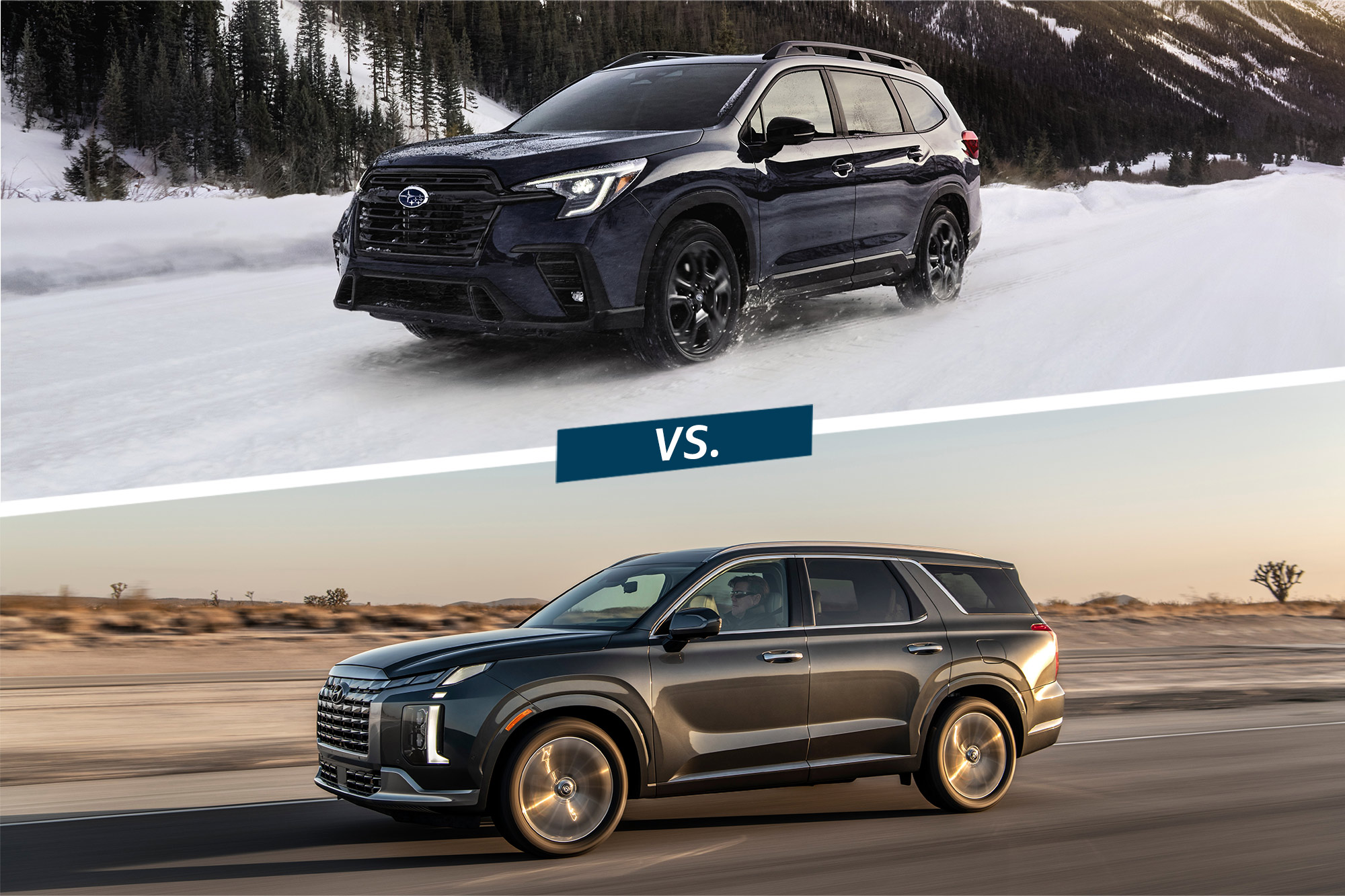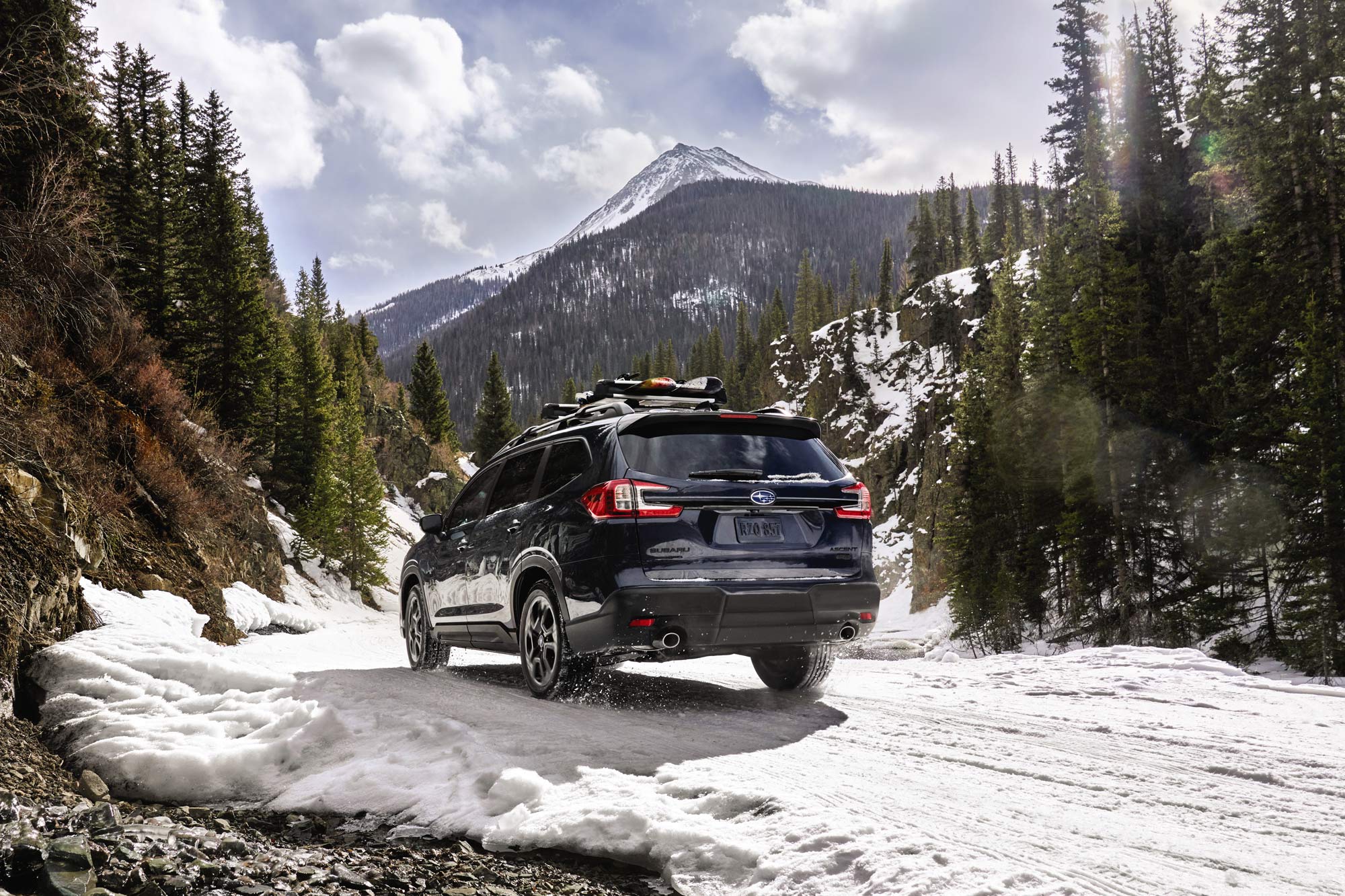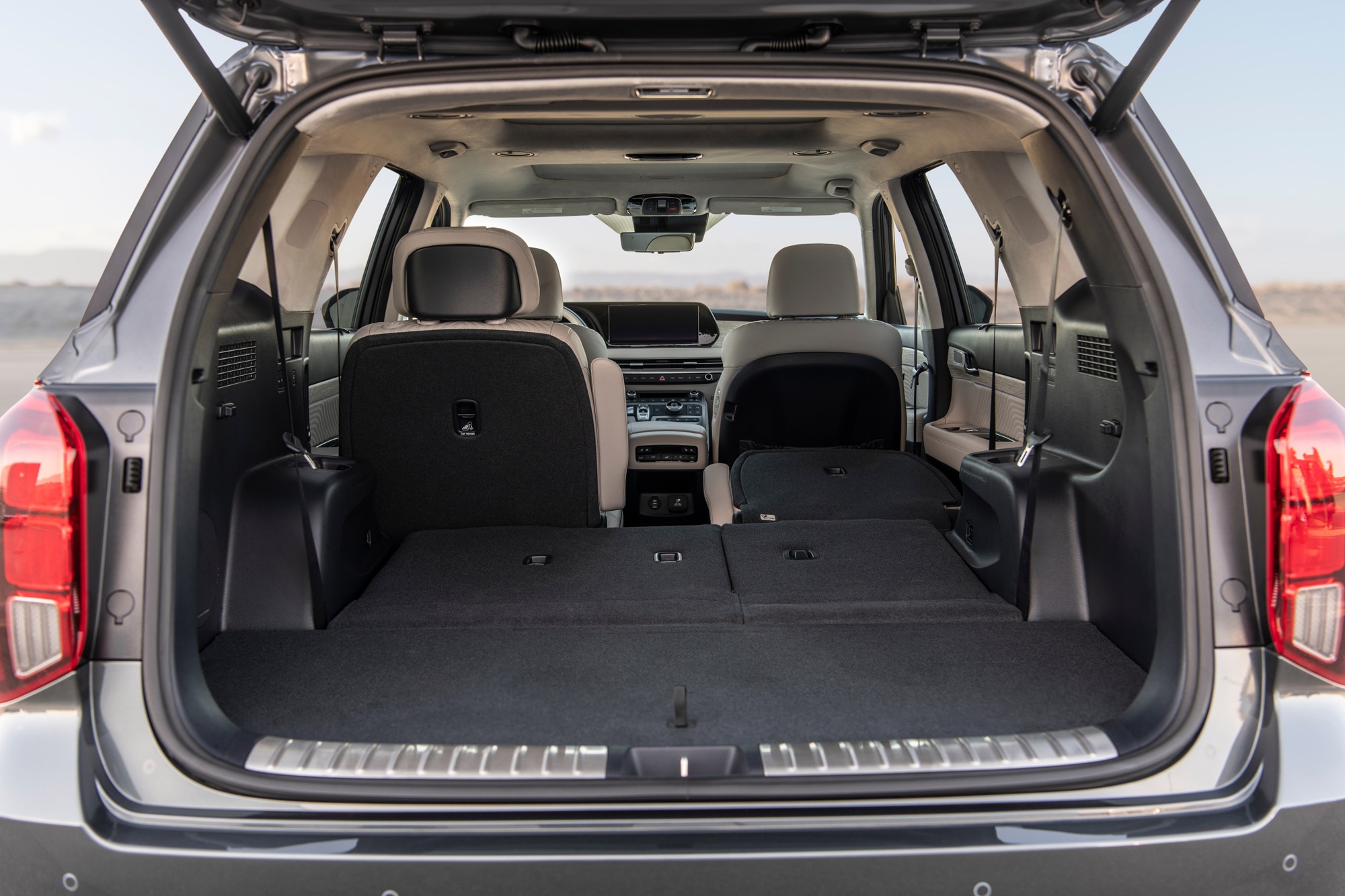Compared: 2024 Subaru Ascent vs. 2024 Hyundai Palisade
Subaru trades on ruggedness while Hyundai leans into luxury.
 Subaru | Hyundai
Subaru | Hyundai
Subaru prides itself on making trail-ready vehicles, catered to adventurers and their dogs. The 2024 Subaru Ascent midsize SUV is no exception, offering standard all-wheel drive and a fold-flat third row.
Hyundai, meanwhile, aims to give buyers a lot of bang for their buck. The three-row 2024 Hyundai Palisade has loads of standard features and an outstanding cabin. If price is a priority, however, the Ascent is still a solid option.
The Subaru Costs Less Than the Hyundai
The Subaru Ascent starts at around $36,000, which is about $2,000 cheaper than the Palisade's base price of $38,000. As mentioned, the Ascent comes standard with all-wheel drive — a $2,000 option on the Palisade.
 Subaru
Subaru
Neither the Ascent nor the Palisade Is Particularly Efficient
The Ascent uses a turbocharged four-cylinder with 260 horsepower, while the Palisade has a V6 engine making 291 horsepower. That lower cylinder count helps give the Ascent an edge in fuel economy. The base Ascent boasts EPA ratings of up to 20/26/22 mpg city/highway/combined, while the Palisade gets 19/26/22 mpg with front-wheel drive and 19/24/21 mpg with all-wheel drive.
 Subaru
Subaru
The Palisade's Interior Is a Standout
The Palisade justifies its higher entry price with additional features. For instance, Ascent buyers need to step up a trim level or two to get desirable features such as blind-spot monitoring, built-in navigation, and proximity-key entry with push-button ignition — all of which Hyundai provides across the board.
While both models offer many of the same amenities at the top of their lineups, only the Palisade has a massaging driver's chair, seat ventilation for the second row and heating for the third, rain-sensing wipers, a head-up display, and color-changing ambient lighting.
The Palisade's interior is also more elegant. The materials feel luxurious, and the dashboard — topped by a 12.3-inch infotainment screen that sits in line with the gauge cluster — is sleek. The Ascent's cabin, on the other hand, adheres to the brand's limited-frills outdoorsy aesthetic.
The chunky dash is far more traditional, with an embedded 11.6-inch touchscreen taking up pretty much all of the center stack. Buyers can opt for leather upholstery in upper trims, but even so, owners likely won't feel bad about tracking mud inside or letting dogs run amok.
Both SUVs offer a second-row bench for eight seats total or captain's chairs for seven, but the configurations are largely dependent on the trims. The two are essentially tied in cargo capacity, but the Palisade has a negligible advantage in passenger space, most of which goes toward legroom in the first and second rows.
All vehicle pricing includes MSRP plus destination charges (set at the time of publication), and will be rounded to the nearest thousand.
Written by humans.
Edited by humans.
 Ben Hsu
Ben HsuBen Hsu is a Southern California-based automotive journalist and historian who has specialized in classic Japanese cars for the last two decades. He drives an FJ60 Toyota Land Cruiser and a Subaru SVX. He has also owned countless other vintage and modern vehicles.
Related articles
View more related articles